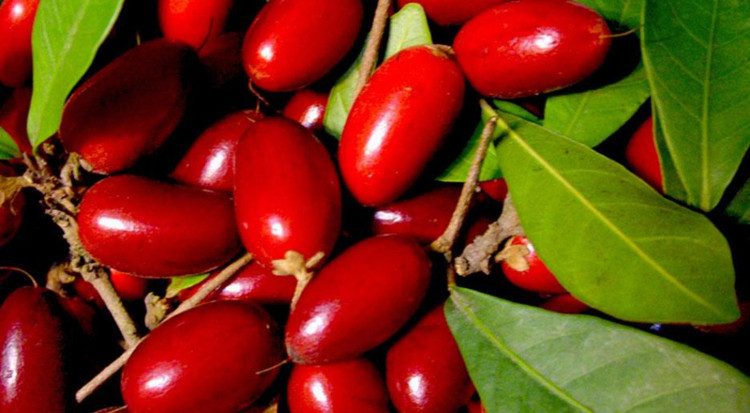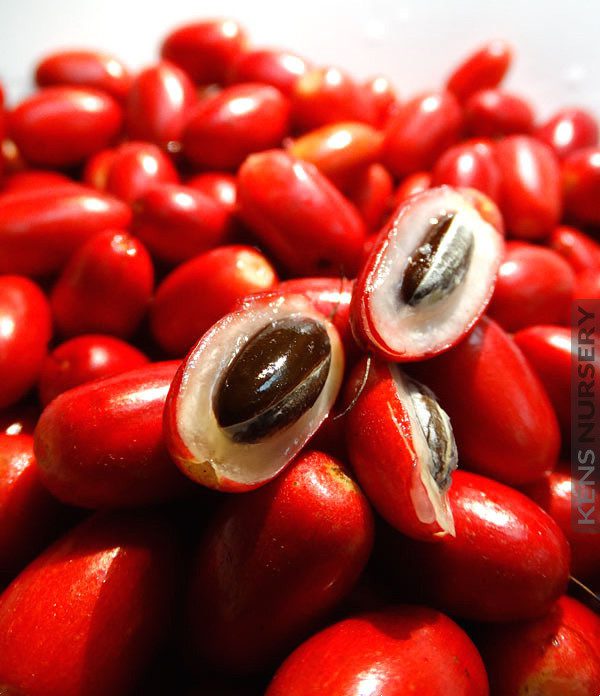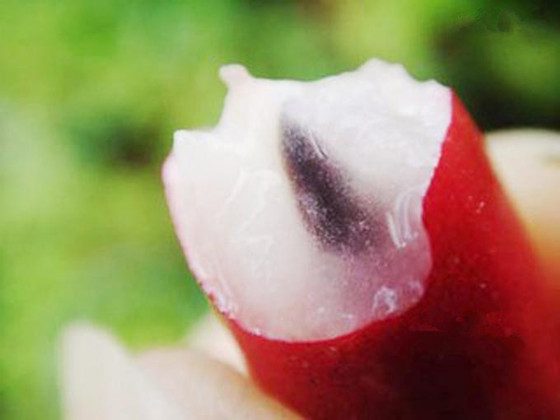Vietnam is currently home to a type of “miracle fruit” that can transform all the flavors in the world into sweetness after consuming it.
In recent years, a fruit has been advertised as “miracle fruit”, which, when eaten, is enough to turn all flavors – including sour, spicy, salty, and bitter – into sweetness.

The “miracle fruit” – a fruit believed to have the ability to turn all flavors into sweetness.
The intriguing aspect is that this “miracle fruit” genuinely works as claimed. That is, after eating one, anything consumed afterward tastes sweet, even lemons, chili peppers, bitter melon, vinegar, or pickled vegetables…
So, what exactly is this fruit that possesses such magical powers?
“Miracle Fruit” – a fruit that alters human taste perception
The miracle tree originates from the West African region and is a small woody plant. This species is widely cultivated in Japan and the United States. The fruit grows in clusters of 2-3 and turns a vibrant red when ripe, making it visually appealing.
The scientific name of the tree we are discussing is Synsepalum dulcificum, and due to its miraculous effects, many cultures around the world refer to it as “miracle fruit.”

The fruit turns bright red when ripe, about the size of a pinky finger.
“Miracle tree” is a species that grows well, reaching heights of up to 6 meters and is incredibly easy to cultivate in various regions. When ripe, the fruit is bright red, about the size of a pinky finger, and upon consumption, makes all subsequent tastes incredibly sweet.
This species was first discovered in 1725 in West Africa by European explorers. Marchais, a member of the expedition, noticed that the locals often chewed a particular fruit before meals. They tried it themselves, and this fruit eventually spread worldwide.
But what causes this fruit to have such miraculous effects?
According to many experts, the miracle fruit contains Miraculin – a type of glycoprotein, which can change the perception of taste buds on our tongues.
Mechanistically, experts state that Miraculin can temporarily “lock” taste buds, except for those that perceive sweetness. Some believe that Miraculin can react with acids in food, transforming sourness into sweetness, even with sour items like lemons and vinegar…

This fruit can react with acids on the tongue or temporarily lock taste buds, except for sweetness.
However, the effects of the miracle fruit are only temporary – lasting a few hours, and it takes about 30 minutes after consumption to take effect. Moreover, if consumed with hot food, the miracle effect diminishes, as Miraculin is a protein that is not stable at high temperatures.
Nonetheless, the mere presence of Miraculin is enough for businesses to take notice. In 1968, the United States became the first country to successfully extract Miraculin and incorporate it into capsule form. At one point, the sugar industry faced significant pressure as the consumption of sugar continuously declined, with people enjoying the sweetness from items that normally wouldn’t taste sweet.
And guess what? The best news is that Vietnam also has this type of fruit. Documents show that this miracle tree was introduced to Vietnam in 2010 and has since spread to most regions across the country.

This fruit is now found in many provinces of Vietnam.
If you’re interested in tasting this fruit, there’s no need to hesitate. However, remember that the miracle fruit only tricks the taste buds and does not alter the chemical structure of other foods.
This means that even if you eat a lemon and find it sweet, the lemon is still very sour, which could pose a risk to your stomach and health.
According to the U.S. Food and Drug Administration (FDA), products related to the miracle fruit are labeled as dietary supplements rather than “sweeteners.” Since 1970, Americans on diets have been able to purchase Miraculin in pill form to trick their taste buds. Sour foods like lemons or pickled items, and bitter foods like hot sauce or alcoholic beverages become sweet after tasting Miraculin.
According to nutrition pharmacist Le Kim Phung, a former lecturer at Ho Chi Minh City University of Medicine and Pharmacy, this fruit only supports but does not lower blood sugar levels in diabetes patients and dieters. However, the sweetness of the fruit makes patients less inclined to use other sweet substances. Consequently, the amount of sugar absorbed into the body decreases, which is beneficial for those on a diet. In Japan, miracle fruit is used to support diabetes patients and dieters.
Precautions when consuming miracle fruit
Miraculin is an unstable protein at high temperatures and degrades when heated. Therefore, when cooked, the miracle fruit will no longer have an effect on taste perception.
Since the miracle fruit provides sweetness after consumption, many people often exploit it to eat sour and spicy foods. Experts recommend not to consume excessive amounts of sour and spicy foods, as these foods are still acidic and alcoholic. Consuming too much can cause damage to the mucous membranes of the mouth and stomach. Prolonged use can lead to mouth ulcers, throat cancer, and stomach and liver cancer.


















































